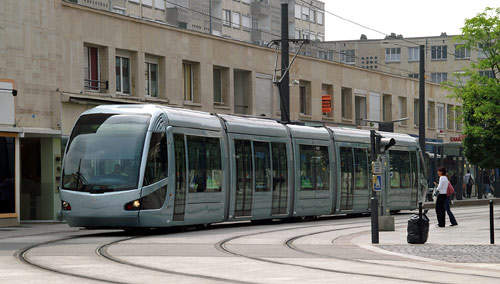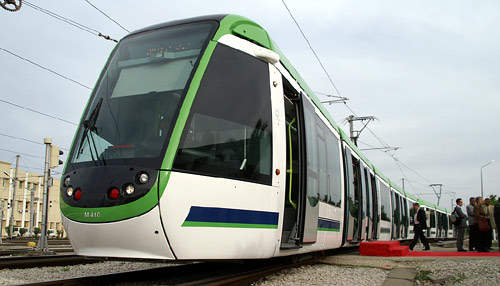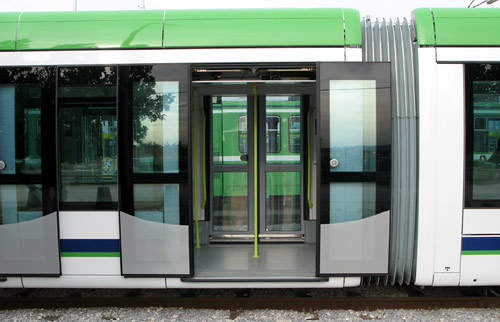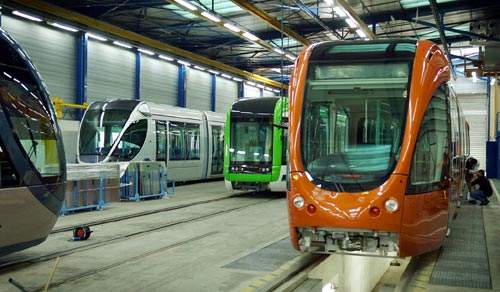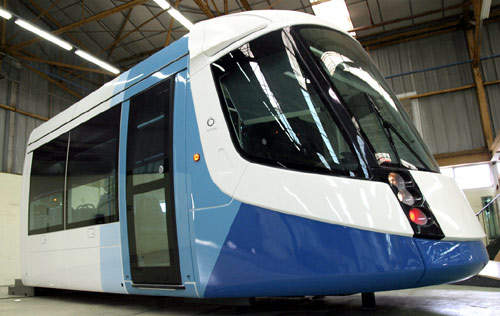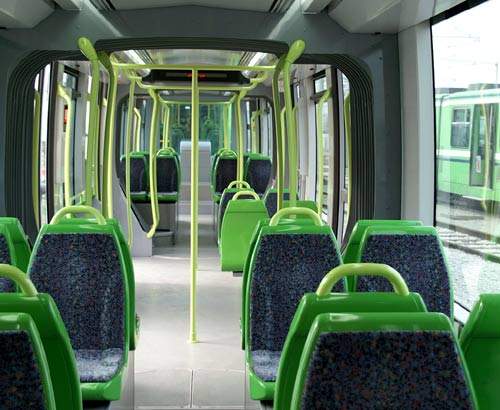Africa’s second largest country, Algeria, is due to progress from having no light rail to three new systems in operation by 2020, as part of an emerging national revival of interest and resources for public transport. The greatest population concentration lies along the Mediterranean coastline to the north, and it is in the three largest cities, Oran, Constantine and the capital Algiers, that the developments are taking place.
Although there is an approximate 4,200km heavy rail system (around two thirds being 1,435mm gauge), this lacks the intensity of service and frequency of stops needed to solve the problem of expanding cities of populations having to travel further and for longer to their places of work.
Algiers has had a metro under development for many years, with much heavy construction completed. However, for reasons including civil unrest and a collapse in oil prices (95% of export revues are from this sector), this scheme stalled.
It was revived by a 2006 contract in respect of Line 1 with a Siemens France-led consortium, also involving Spain’s CAF (for trains) and French company Vinci Construction.
In another development, Alstom has been contracted by national rail operator Société Nationale du Transport Ferroviaire (SNTF) for an €89m, 350km electrification scheme and the supply of stock for three suburban lines south of Algiers.
THE PROJECT
In addition to the previously announced Algiers scheme, the Oran and Constantine tram projects represent a further expansion of Alstom’s already significant presence in the Middle East and North Africa (MENA) zone. The three most north-westerly North African countries will all feature tramways using Citadis vehicles.
The established Tunis network introduced Citadis in 2007 and a new line in the Moroccan capital, Rabat, is due to open in 2010. As in neighbouring Morocco, Alstom’s interests in Algeria extend to heavy rail and power generation.
In 2006, Algerian public transport operator Entreprise du Métro d’Alger (EMA) selected Alstom and consortium partners for a €355m (Alstom €256m) contract for the Algiers tram system, heading east from the city to link El-Annasser with Borj El-Kiffanareas.
The initial section of the twin-track system will be 16.3km long, with 30 stations. An extension from Borj-El Kiffan will go to Derganais, to create 23.3km overall, serving 38 stations. The Algiers tramway is expected to transport up to 185,000 people daily.
Around 450km west of Algiers, Oran is due for an 18km line, with 32 stations to be delivered by the Tramnour consortium consisting of Alstom and the Spanish Isolux Corsan group. The line will run via the city centre from the south to the east of the metropolitan area. Alstom will supply 30 Citadis vehicles, the signalling and telecommunications system, depot equipment and substations. Isolux Corsan will be in charge of civil engineering, track and overhead lines.
Unlike Algiers and Oran, Algeria’s third city, Constantine, is inland. The 8km line will have 11 stations. Alstom has a greater share in this consortium, supplying 27 Citadis vehicles, track, power supply, signalling and telecommunications and the depot equipment. Italian company Pizzarotti will carry out civil engineering works. Projected passenger levels are 160,000 per day.
INFRASTRUCTURE
Unlike in neighbouring Tunisia where the Tunis light rail operation was already well established prior to the arrival of the Citadis, the three Algerian schemes are all ‘turnkey’ projects, whereby the whole system is planned, built and operated as an integrated whole. It will include track, vehicles, power supply, traction electrification, the signalling system, control equipment, maintenance, some of the public works and the system’s depot. This pattern is familiar in Alstom’s home market, as exemplified by Reims, Bordeaux and Valenciennes.
ROLLING STOCK
It was the jointly announced orders in October 2007 from Lyon, Istanbul and Algiers that pushed Citadis to over 1,000 vehicles sold. Offering the proven successful formula of easy access to a low floor area, rapid loading/unloading and on-board information and safety systems, the vehicles will be built at Alstom’s plant at Barcelona, Spain. As with other customers for the basic modular system that contains 80% common content with all vehicles in the type, Algeria will incorporate its own
specifications for design and configuration of the vehicles.
THE FUTURE
The revived Algiers Metro scheme could lead to the first openings by late 2008, with more to follow with the system completed by 2020. The first phase of the Algiers tramway is projected to open in spring 2009, followed in the next year by Oran and Constantine. A fourth system at the industrial city of Annaba (population around 250,000) in the north-west near the Tunisian border is also under consideration.

